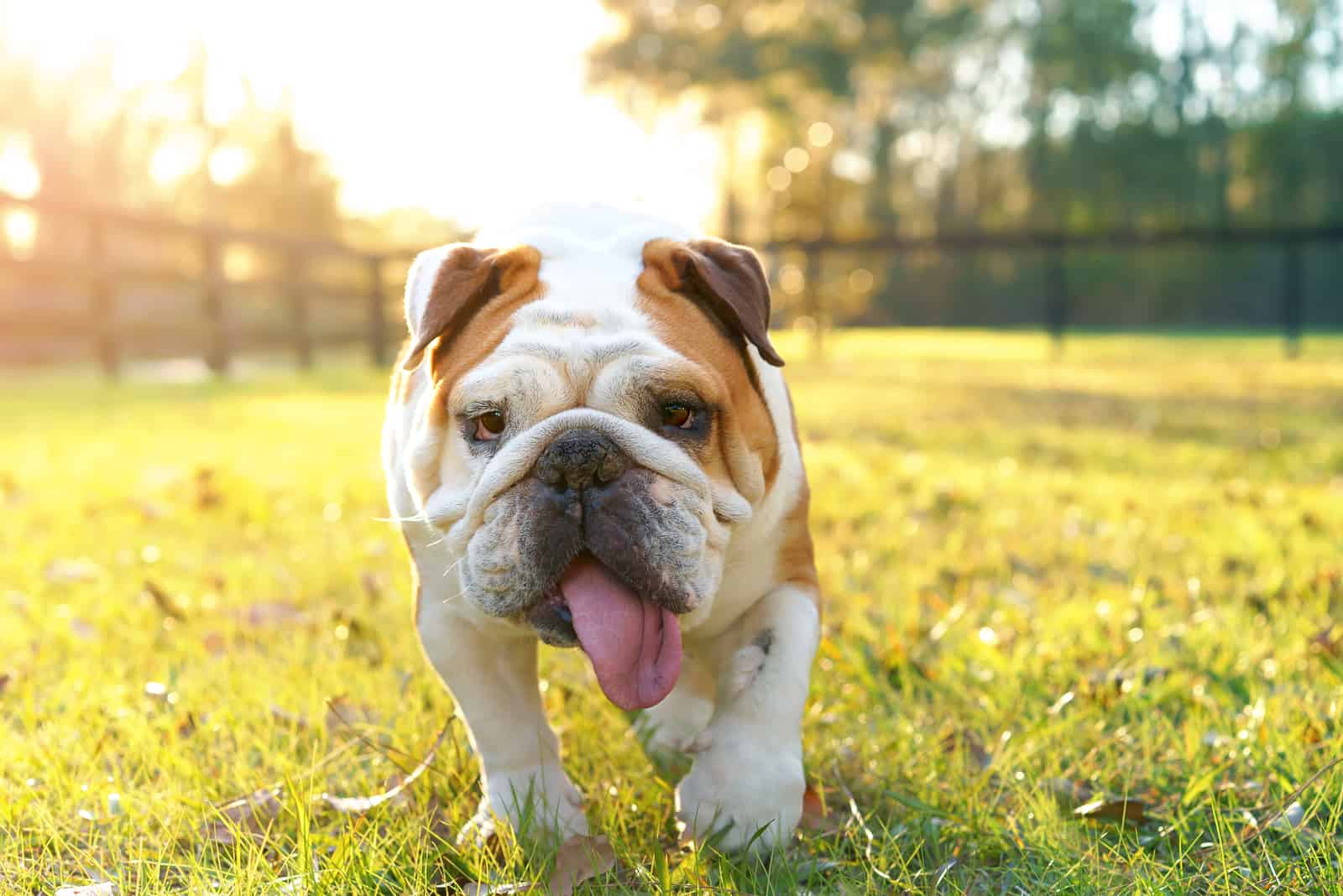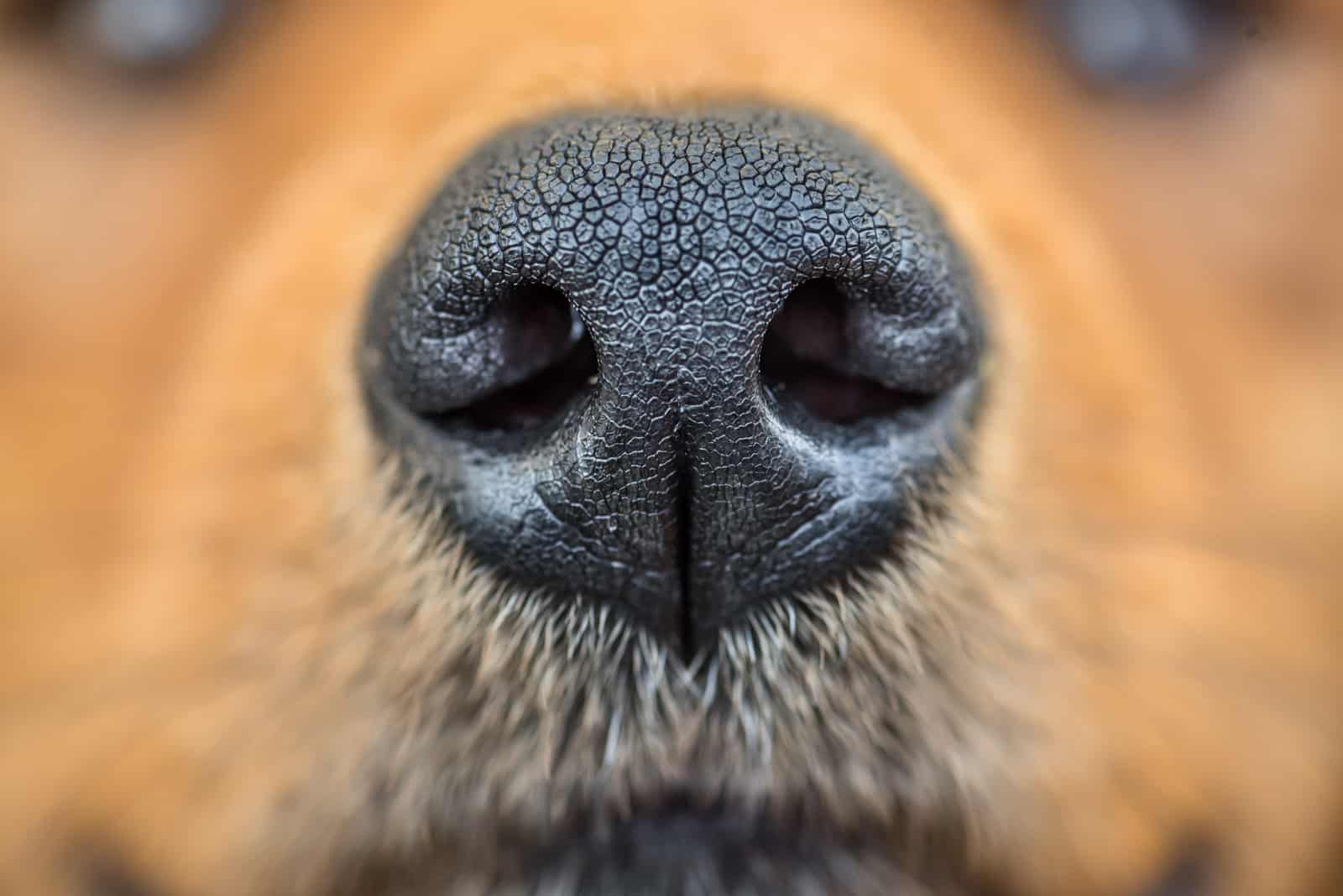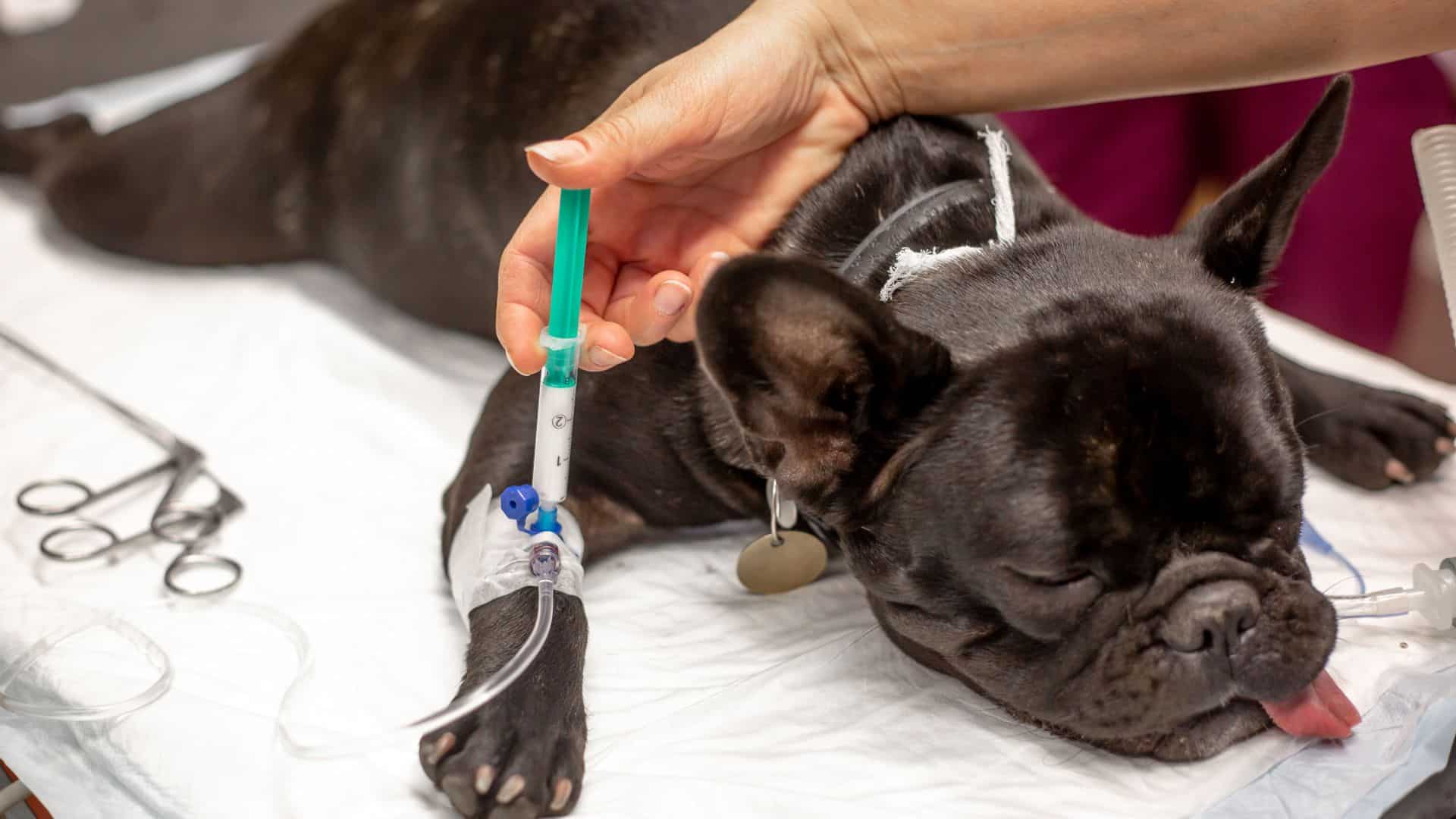There are some seemingly random things that we notice about our dogs that can set us into panic mode. For example, once, I was cuddling with my dog and I noticed that my dog’s head was hot!
People love to attribute human characteristics to animals, especially dogs. As such, when you touch your dog’s head and realize it’s hot, you’re probably concerned that he has a fever.
But, your dog might appear entirely healthy other than the temperature of his head. What does this mean, and is it a sign of concern?
Sure, your doggie might suffer from a fever, but this isn’t something you can simply tell by touching his head. In fact, the only way you can know for sure is to use a thermometer and check your dog’s temperature.
This might also mean that your dog stayed near some heat source or in the sun for too long. Also, maybe it’s just your dog’s natural cooling mechanism – yes, this can cause your dog’s body to try to get rid of excess temperature by seemingly overheating.
So, how can dog owners know whether they’re dealing with a dog’s fever, or if this is just a normal occurrence?
When I noticed my dog’s head was hot, this is what I found:
Why Does My Dog’s Head Feel Hot?

When a dog owner realizes: ‘My dog’s head is hot!’, the first thought is to panic. This is because a hot forehead in humans usually indicates a rather severe problem, such as a fever.
However, just because something is the case for humans doesn’t make it the same for dogs.
Sure, a hot forehead on dogs might mean that they have a fever. Most of the time, however, the cause is entirely benign.
If you ask yourself: ‘My dog’s head is hot. Should I be worried?’, you most likely shouldn’t.
Dogs Have a Higher Body Temperature
First off, a dog’s normal body temperature is 101.0 to 102.5 degrees Fahrenheit (38.3 to 39.2 degrees Celsius). As you can see, this is higher than a regular body temperature in humans, which is anywhere between 97.6 and 99.6 degrees Fahrenheit (36.44 to 37.5 degrees Celsius).
As such, your dog’s head might feel hot simply because it is a bit warmer than your hand, and this isn’t a sign of concern. Even though you might think your dog’s forehead is hot, this is likely just a dog’s normal temperature.
Not just that, but our fingers aren’t that sensitive, and they cannot estimate temperatures around us accurately. Your dog’s head might not be that hot at all!
My Dog’s Head Is Hot – Common Causes

Most of the time, you shouldn’t worry because your dog’s head appears hot. It’s always best to monitor him and try to find out the cause behind this.
In most cases, a warm head is nothing to be worried about. However, in those rare cases where it is a sign of something bad, if you leave his condition unattended, he might suffer severe consequences to his health.
Below are some of the most common reasons why your dog’s head might feel hotter than normal, and how to deal with each and every one of them:
Fever
Unfortunately, yes, if your dog’s head is hot, this might indicate that he is fighting a fever.
A fever is an elevation in body temperature. Most of the time, this is a serious medical condition, and it should be dealt with as quickly as possible.
In dogs, a fever is mostly when the dog’s temperature goes over 103 degrees Fahrenheit. This is a clear indication that your pooch requires immediate medical help.
There are several reasons why your dog might be suffering from a fever. These include both external and internal factors. The most common causes of fever are:
1. Infection – Infections can cause dogs to develop a fever. In fact, most infections will involve fever as the main symptom. These infections can be both internal and external, and you should find the source behind them as quickly as possible.
An external infection could come from something as minor as a scratch or a bug bite. Even the smallest cut on the skin can become infected, causing fever. A dog’s ears and teeth can also get an infection, especially due to poor hygiene.
In fact, dental and ear infections can be so painful that they might influence a dog’s behavior. Your dog might become agitated despite the high temperature and overall tiresome feeling.
Sometimes, germs might get under your dog’s skin, causing an infection. It doesn’t matter what kind of germs we’re talking about – bacterial, viral, or fungal. The most important thing to discover is whether they’re affecting only one organ or several of them.
Some germs can cause infections that will affect vital organs, including the heart, kidneys, lungs, or even the dog’s brain.
All infections can worsen if you don’t treat them appropriately and as quickly as possible. While you may be able to locate some external factors that have led to the infection, it is wise to contact your vet who will give you proper medication.
2. Toxication – Out of all the possible reasons for fever, this one is the most urgent. If your dog has eaten something toxic or poisonous, he might develop a high fever as a result of poisoning.
Many house plants are extremely poisonous to dogs. The same goes for some foods such as chocolate, prunes, macadamia nuts, and so on. Dogs can also get poisoned if they eat human medication.
Unfortunately, sometimes dogs can eat rat poison or other types of toxins while on a walk – especially if you’ve let them roam free in the dog park or outdoors.
Most of the time, you may find the cause of poisoning near your dog. This includes medicines, chocolate wraps, or half-eaten plants. This is essential as it can indicate exactly what type of toxin your pup ingested.
If you suspect your pooch has been poisoned, rush him to the vet as soon as possible. Some poisons can kill dogs in a matter of minutes, and you shouldn’t leave anything to chance.
3. Vaccination – It isn’t rare for your dog to develop a fever as a reaction to a vaccine. If you’ve taken your four-legged friend to the vet recently to get his shots, chances are the fever is the result of a vaccination.
Sometimes, the immune system tries to fight the substances in the vaccine, resulting in a fever in an otherwise healthy dog.
Keep in mind that this type of fever shouldn’t last for more than 48 hours. If it does continue for a longer period, it would be wise to contact your vet who might advise you on further steps.
If you are uncertain as to whether your dog has a fever or not, and you’re not able to measure his temperature, there are several symptoms of fever that you should look for.
No matter what the cause, at least one of the following signs of fever should be present:
• Nasal discharge
• Lethargy
• Depression
• Shivering
• Vomiting
• Loss of appetite
If your dog’s head feels hot to the touch and you see any of these symptoms, try to get him to the vet as quickly as possible. While a fever of unknown origin exists, most of the time, there is a precise cause for it. The sooner your vet finds the reason behind the fever, the greater the chances are of recovery.
Natural Cooling Mechanism

Dogs have a natural cooling mechanism that not many people know about.
Dogs don’t sweat as humans do. Instead, the only way for them to cool down and lower their body temperature is to pant. While they can sweat, the only body part they can sweat through are their feet, and this is barely enough.
However, they have a unique mechanism that humans don’t possess. When their body temperature rises, their body can circulate the warm blood all the way to their heads before spreading it to the dog’s ears. This makes it easier for the dog to cool down.
If a day has been particularly hot, chances are your dog’s cooling mechanism is working to keep your pup feeling as pleasant as possible. It could be ‘operating’ for a very long time until the temperature is back to normal.
If this is the case, you might feel that your dog’s head is rather hot, and you might mistake this for a fever. However, this is simply hot blood circulating to the dog’s head, cooling him down.
Stress
Just like humans, dogs can get fever-like symptoms if they are stressed out. Try to think whether you’ve made any major changes in your dog’s environment in the past couple of days.
Did you move out? Maybe you had a baby, or you’ve adopted another pet. Chances are there have been fireworks outside, especially if it’s the holiday season. Or, maybe there has been a thunderstorm that scared your dog.
Dogs can get afraid of many things. In fact, the time when most owners have reported “My dog’s head is hot” to their vets is around the Fourth of July, Thanksgiving, and Christmas. This is because of the increased noise and fireworks that stress the dog out.
Fever is a normal biological response to stress, and if this is the case, you shouldn’t worry. However, it might be wise to try to help your dog relax and make him feel better. Comfort him, or allow him to sleep under the blankets for a while. All of this can help a dog overcome his stress.
Normal Daily Occurrences
Most of the time, however, if you wonder “Why is my dog’s head hot”, the reason will be something entirely harmless that happened in your dog’s environment. We’ll explain.
If your dog has been sitting next to the heater or the fireplace, he’s going to feel warmer than normal. In fact, most of the time, he’ll sniff around the heat source and his head will feel hotter than usual.
Most of the time, when I noticed that my dog’s head was hot, it was because he played in direct sunlight for hours on a hot day.
Sleeping under the covers can also make your dog’s head feel warmer than usual, so always try to take the whole picture into consideration.
Can You Check Your Dog’s Health By Their Nose?

There is a misconception among many dog owners who wonder: ‘My dog’s head is hot. What should I do?’, and that is to check the condition of a dog’s nose. Allegedly, this can further indicate whether your dog is suffering from a fever or not.
There are claims that if your dog has a wet and cold nose, there is nothing wrong with him and he is perfectly healthy. On the other hand, if he has a warm, dry nose, then he is likely sick.
Truthfully, there are many different reasons why a dog’s nose might feel one way or another. For example, maybe your dog has just licked his nose, making it feel cold and wet.
On the other hand, your dog’s nose might be warm and dry because of the weather, or even old age. Older dogs tend to have dry skin, and this includes their noses.
As such, the only way to truly check whether a dog has a fever is to use a thermometer. It doesn’t matter if you use a regular or a digital thermometer as long as you know how to measure a dog’s temperature with it – but more on that later.
How To Measure A Dog’s Temperature
It’s effortless to measure a human’s body temperature, thanks to the thermometer that goes under our armpits. However, this isn’t as straightforward in dogs, and this is where things get a bit complicated.
First off, you cannot measure a dog’s temperature with a regular human thermometer. Instead, you’ll need a special one designed for canines.
There are two types of thermometers available, and both can be bought in stores as well as online on sites such as Amazon:
• Digital thermometer
• Rectal thermometer
A rectal thermometer is the more precise one out of the two, but it’s rather uncomfortable for your pup, and it isn’t easy to use.
A digital thermometer, also known as the ear thermometer, isn’t as accurate, but it can still clearly show you whether your dog has a fever or not. Also, it’s easier to use, and much faster.
If you’re using a rectal thermometer, you should ask a friend to help you out. You should measure the dog’s temperature while they are holding your dog and giving him treats.
To do so, you should get a water-based lubricant and place it on the tip of the thermometer. Then, gently insert the device about an inch deep into your dog’s anus. Make sure it stays there for 45 to 60 seconds. Read the instructions for precise timing. Then, take it out and read the temperature.
Digital thermometers are used by gently inserting them into the dog’s ear canal. Most come with detailed instructions that will let you know exactly how to use it.
Overall, you don’t insert these thermometers too deeply, and you shouldn’t leave them in too long. In fact, most digital thermometers take up to three seconds to measure the precise temperature. Also, most of them will beep to let you know it’s time to take it out.
Everything under 103 degrees Fahrenheit is perfectly fine. However, if your dog’s body temperature is 103 or more, you should take him to the vet as soon as possible, as there might be something severely wrong with his health.
How To Cool Down A Dog That Has Overheated

Many dogs can handle hot weather. However, as they cannot tell you they’re feeling hot, and they cannot always find a way to cool themselves down, they are more prone to heat stroke and overheating than humans.
If you suspect your dog is overheating, the first thing to do is move them to an airconditioned room or even in front of a fan. As dogs don’t sweat like humans, don’t worry about the wind from the fan making them cold as their coat isn’t wet.
Give them cool water to drink, but don’t force them if they don’t want to drink it at the moment. However, take wet pieces of cloth and place them on the dog’s pulse points such as their armpits, behind their hind legs, neck, and so on. This can help lower their temperature.
Other Head Problems In Dogs

Other than noticing that ‘My dog’s head is hot’, there are several other possible issues with a dog’s head that dog owners sometimes notice.
While most of the time, we, as dog owners, are overreacting, sometimes there is something seriously wrong with our pets, and we need to know how to differentiate the two.
Here’s what we mean:
My Dog’s Head Is Hot, And His Nose Is Dry
If you feel like your dog’s head is hot, and he has a dry nose, this isn’t an immediate sign for panic despite this being a schoolbook’s example of a dog being sick – or so we were told.
However, as we’ve already mentioned, there are several reasons why a dog’s nose might be dry, and most of them don’t indicate sickness.
You should always look for other signs of fever if you want to know whether your pooch is sick, and not just stick to the nose method.
My Dog’s Head Is Twitching
Most of the time, a dog’s head twitching is perfectly normal. Your dog has simply seen something you didn’t see and it is startling him, causing a reaction similar to head twitching.
However, sometimes the reason behind head twitching is much more severe. This might include seizures, nervous system disorders, or even head injuries. It can even be idiopathic, or seemingly without any cause at all.
If you notice your dog twitching his head once every blue moon, don’t worry about it. However, if this behavior is common or if it worsens over time, contact your veterinarian to rule out any possible health issue.
My Dog’s Head Is Tilted
Just like head twitching, a dog can tilt his head for many reasons, and most are purely behavioral. A dog will tilt his head if he’s observing something, or if he’s listening to you.
However, if a dog tilts his head frequently, this can be an indicator that he feels imbalanced. This can be a sign of disorders of the vestibular system located in the inner ear that helps provide information to the body so it can know how to hold an upright position.
My Dog’s Head Is Hot – Can I Help Him?

Photo from: @toffi_little_dalma
“My dog’s head is hot. Should I do something about it?” is a question vets hear often.
However, the truth is that most of the time, your dog’s head is feeling hot for some benign reason, such as sitting in the sun too long.
The best thing you can do is give your dog a bowl of cold water and keep him in the shade. If your pooch is overheated, this is likely all he needs to start feeling more pleasant.
However, if you suspect your doggy is having a fever, never attempt to treat him on your own. Human medication, such as ibuprofen, can be extremely harmful to dogs, so don’t attempt to give it to your pet.
Take your dog to the vet as soon as possible. Only a professional can know how to find the true cause of fever and what to do about it. Even if he doesn’t have a fever – it’s better to be safe than sorry.











